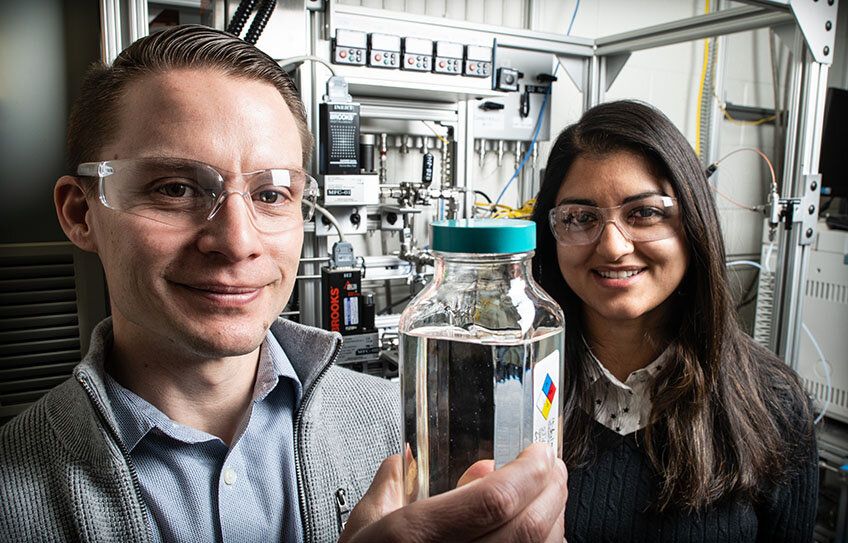Infrared cameras detect people and other objects by the heat they emit. Now, researchers have discovered the uncanny ability of a material to hide a target by masking its telltale heat properties.
The effect works for a range of temperatures that one day could include humans and vehicles, presenting a future asset to stealth technologies, the researchers say.
What makes the material special is its quantum nature—properties that are unexplainable by classical physics. The study, published today in the Proceedings of the National Academy of Sciences, is one step closer to unlocking the quantum material’s full potential.
(Reuters) — Nvidia Corp on Wednesday said it has won a series of deals in which some of China’s biggest technology companies are using its chips to make product recommendations and to develop self-driving vehicles.
The government will inject around 50 billion roubles (US$790 million) over the next 5 years into basic and applied quantum research carried out at leading Russian laboratories, the country’s deputy prime minister, Maxim Akimov, announced on 6 December at a technology forum in Sochi. The windfall is part of a 258-billion-rouble programme for research and development in digital technologies, which the Kremlin has deemed vital for modernizing and diversifying the Russian economy.
National initiative aims to develop practical technologies that could mine databases and create ultra-secure communication networks.
Pain meds and surgeries are often no better at alleviating chronic pain than placebo pills and pretend surgeries, frustrating physicians and patients alike. Researchers are starting to get some answers.
AMD has published its new FEMFX deformable materials physics library and made it available for anyone to use in games and other software development.
AI doesn’t know when it creates unintended consequences. As builders try to fix this, they may actually contribute to the problem.
The NREL scientists, along with colleagues at Yale University, Argonne National Laboratory, and Oak Ridge National Laboratory, are part of the Department of Energy’s Co-Optimization of Fuels & Engines (Co-Optima) initiative. Co-Optima’s research focuses on improving fuel economy and vehicle performance while also reducing emissions.
“If you look at biomass, 30% of it is oxygen,” said Derek Vardon, a senior research engineer at NREL and corresponding author of a new paper detailing the Co-Optima research project. “If we can figure out clever ways to keep it around and tailor how it’s incorporated in the fuel, you can get a lot more out of biomass and improve the performance of diesel fuel.” The molecule, 4-butoxyheptane, contains oxygen while conventional petroleum-derived diesel fuel is comprised of hydrocarbons. The presence of oxygen significantly reduces the intrinsic sooting tendency of the fuel upon burning.
The paper, “Performance-advantaged ether diesel bioblendstock production by a priori design,” appears in the journal Proceedings of the National Academy of Sciences. Vardon’s co-authors from NREL are Nabila Huq as the first author, with co-authors Xiangchen Huo, Glenn Hafenstine, Stephen Tifft, Jim Stunkel, Earl Christensen, Gina Fioroni, Lisa Fouts, Robert McCormick, Matthew Wiatrowski, Mary Biddy, Teresa Alleman, Peter St. John, and Seonah Kim.









